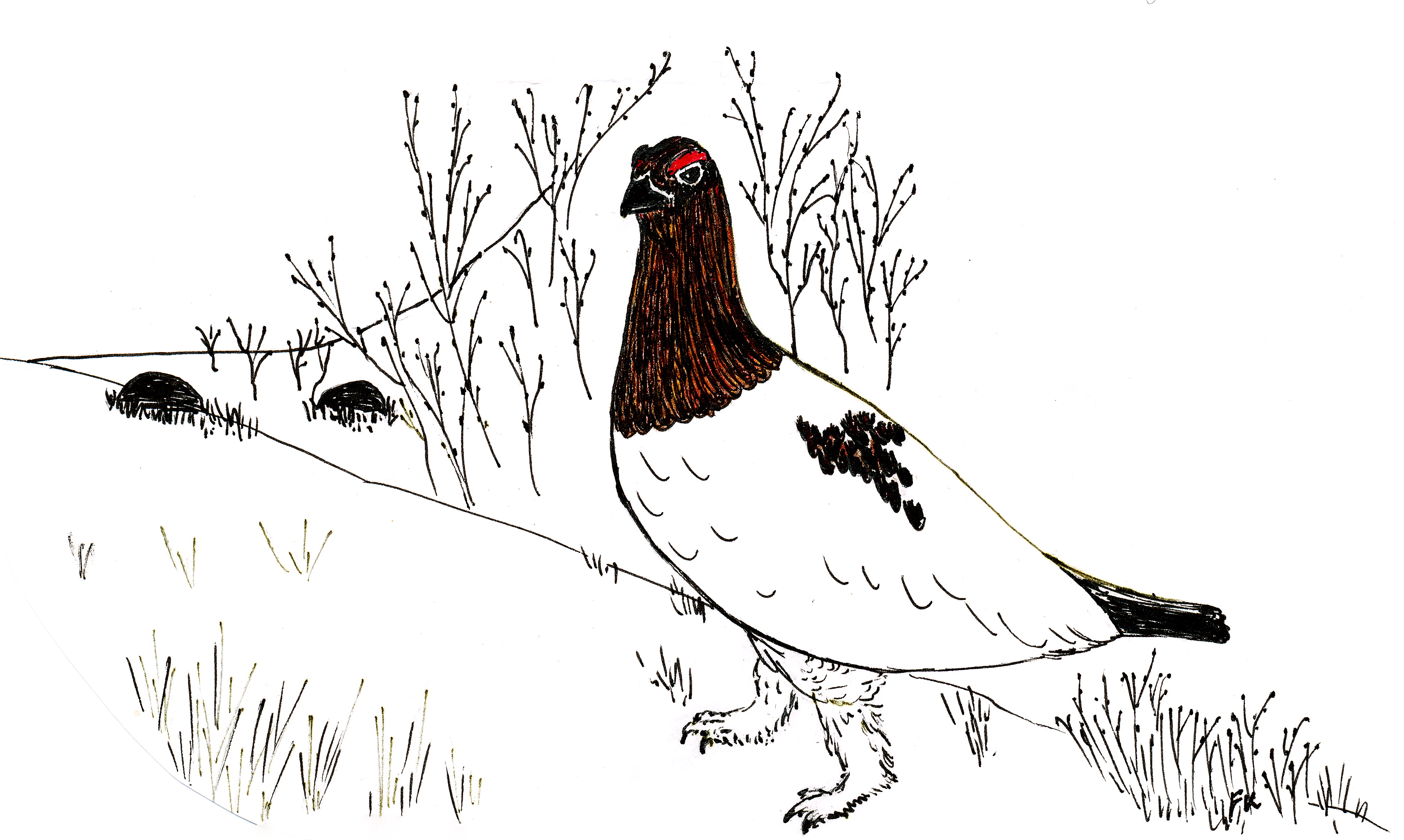Willow ptarmigan
Aqezaqezaqezaqezqzqzqzqzqz....

Ever heard that sound? Sure you have. Just walk out in the tundra in Spring, and I guarantee, if you listen hard enough, you’ll hear it.
Enter, two aspiring bird watchers.
“Okay, now we’re in the tundra, and we hear it. So, what are we hearing?”
“Did you remember your binoculars? No. Well, go back and get them.”
Pause....
“You’re back. Good. Now take your binocs and scan the horizon. Stop! See them...like little white snowballs skittering across the tundra.”
“Yah, tundra chickens.”
“Right, except those aren’t any old chickens. Those are willow ptarmigan, what they call around here, aqesgiq, because of the sound of their spring mating call (that word, “onomatopoeia” again). That’s what you’re hearing right now.”
“Alright, what next?”
“Well, watch them for a while and you might see some interesting action out there.”
If our new bird watching friends really did take the time, they probably saw some remarkable behavior between the male ptarmigan and a few passionately curious females (ptarmigan) that came around to check him out. They also might have witnessed some very aggressive behavior on the part of the male if any other males happened to venture near the little bare patch on the tundra that he called his own. What they saw might have reminded them of a bloody cock fight they’d seen in Mexico.
If the bird watchers return the following day, they might see the ptarmigan mating game unfold even further.
After frightening off his rivals, and with bright red nuptial “eyebrows” (also called combs) flashing at high speed, the male aqesgiq begins to strut his stuff and flutter his brown-stained wings, chuckling for all he’s worth to attract the woman of his dreams over to his little bare patch on the tundra so he can, you guessed it, make babies and quickly settle down to married life and all that means to a male ptarmigan.
Unlike the other two species of Alaska ptarmigan, the aqesgiq is actually a pretty good husband and sticks around while his new wife builds her nest, then lays and incubates her 10 (or more) eggs. Hiding in a thicket near the nest, he will do whatever it takes to defend his spouse from attacks by gulls and jaegers. He flies viciously at them, sometimes even knocking them over, to prevent them from getting the eggs of his future progeny. One was once even seen frontally attacking a grizzly bear that stumbled on his mate’s nest. If you chase after the chicks and try to pick them up, prepare for a fierce flying attack yourself. This almost happened to me in the Arctic National Wildlife Refuge. I escaped just in time.
Here’s something else. If his mate is somehow killed while still brooding her eggs, the male will take over the responsibility of not only incubating the eggs, but also of feeding the young until they’re old enough to care for themselves. I wonder how many humans would do that?
Okay, that’s enough for now about aqesgiq.
Except for two things, two important things, the scientific name, which I’ll give you: Lagopus lagopus, and, what else? You tell me. But I’ll give you a hint....It has to do only with Alaska.







